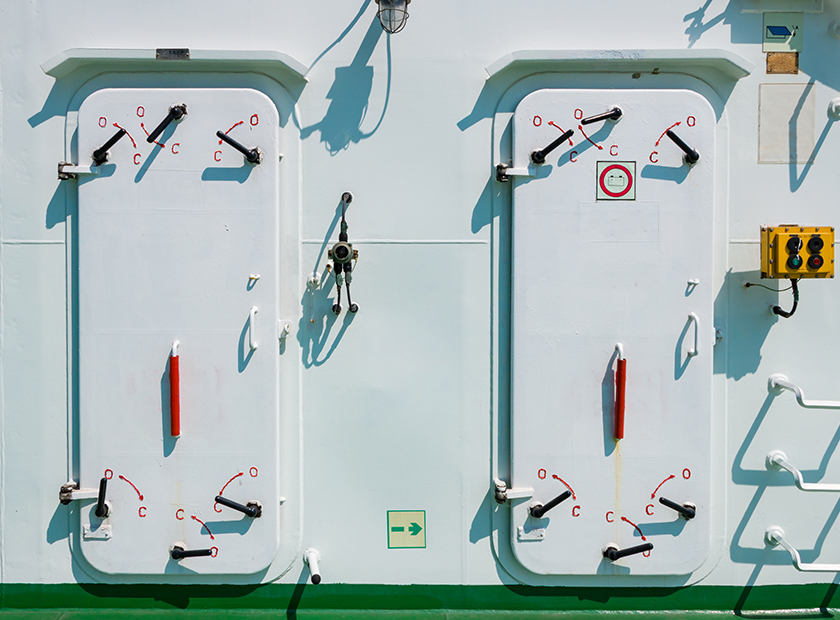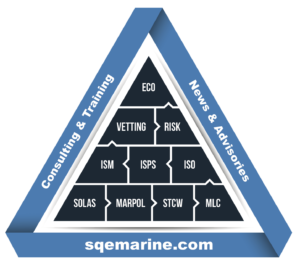Overview
AMSA announced that they are carrying out ongoing watertight and weathertight integrity inspections during routine Port State Control (PSC) throughout 2022-23.
Aim of enhanced inspections
The aim of the inspections is to support foreign-flagged and regulated Australian ships with information to help operators avoid water ingress and the associated safety and financial risks. Ship inspection data shows that watertight and weathertight integrity remains a persistent and concerning issue for ships in Australian ports, making up 9% of detainable deficiencies in 2021.
Questionnaire
There is no specific questionnaire for the above announced inspections. AMSA PSCOs will focus on watertight & weathertight condition of the vessels during typical PSC inspection.
Highlights
Watertight and weathertight elements are part of the design of a ship. Watertightness is required for all openings located below the ship’s waterline, for example, shaft tunnels, ballast tanks, and bow thruster compartments. They must be designed and maintained to prevent ingress and egress of water during continuous submersion. Weathertightness is required for all other ship components, which must be designed and maintained to prevent water from entering the ship in any sea conditions.
Watertight and weathertight deficiencies identified during a port State control inspection often reflect a failure of the planned maintenance program to address watertight and weathertight integrity issues in areas such as:
- watertight doors
- cargo hatches and hatchways
- ballast tanks and cargo hold venting
- overboard sea water valves
Effective and regular maintenance:
- reduces the risk of equipment failure; and
- ensures that components and systems continue to perform their designed function.
Actions required
Ship managers and Masters should be prepared to address related items. Mostly watertightness and weather tightness is a construction item but maintenance of applicable systems and equipment is vital for the preservation of condition.
Key items for good preparation as below:
- Regularly check the locations of watertight and weathertight components — that they’re closed when they’re meant to be, and their condition.
- Ship’s safety management system includes planned maintenance for watertight and weathertight components.
How we may help
Through RiSK4SEA platform an analysis on AMSA findings on related Deficiency Categories as per Appendix.
Appendix: AMSA PSC Results – Last 36 months (Source RiSK4SEA)
| Category | AMSA Share | Global Share | Deviation |
| MLC | 14.88% | 15.00% | -0.8% |
| Fire Safety | 14.46% | 13.73% | 5.3% |
| Safety of navigation | 12.07% | 11.26% | 7.2% |
| Life Saving Appliances | 10.34% | 10.46% | -1.1% |
| Water/Weathertight Conditions | 6.95% | 5.02% | 38.4% |
Water/Weathertight Conditions Are in top 5 PSC Deficiency Areas in AMSA PSC regime. AMSA seems to be very strict on such items as the PSC results on this category are higher (stricter) than Global.
Most Common Findings on PSC Codes of “Water/Weathertight Condition” Deficiency Category in AMSA PSC Regime – Last 36 months
| Rank in AMSA |
Deficiency Code |
Number |
| 7 | 03105 – Covers (hatchway-, portable-, tarpaulins, etc.) | 312 |
| 15 | 03108 – Ventilators, air pipes, casings | 236 |
| 45 | 03103 – Railing, gangway, walkway and means for safe 114 passage | 114 |
| 51 | 03104 – Cargo & other hatchways | 109 |
| 65 | 03107 – Doors | 86 |
| 66 | 03199 – Other (load lines) | 86 |
| 70 | 03102 – Freeboard marks | 77 |
| 88 | 03109 – Machinery space openings | 61 |
| 106 | 03112 – Scuppers, inlets, and discharges | 46 |
| 115 | 03110 – Manholes/flush scuttles | 41 |
| 136 | 03114 – Stowage incl.uprights, lashing,etc. (timber) | 32 |


